The biggest digital art trends we'll see in 2024, as predicted by ILM, Wētā FX and other industry creatives
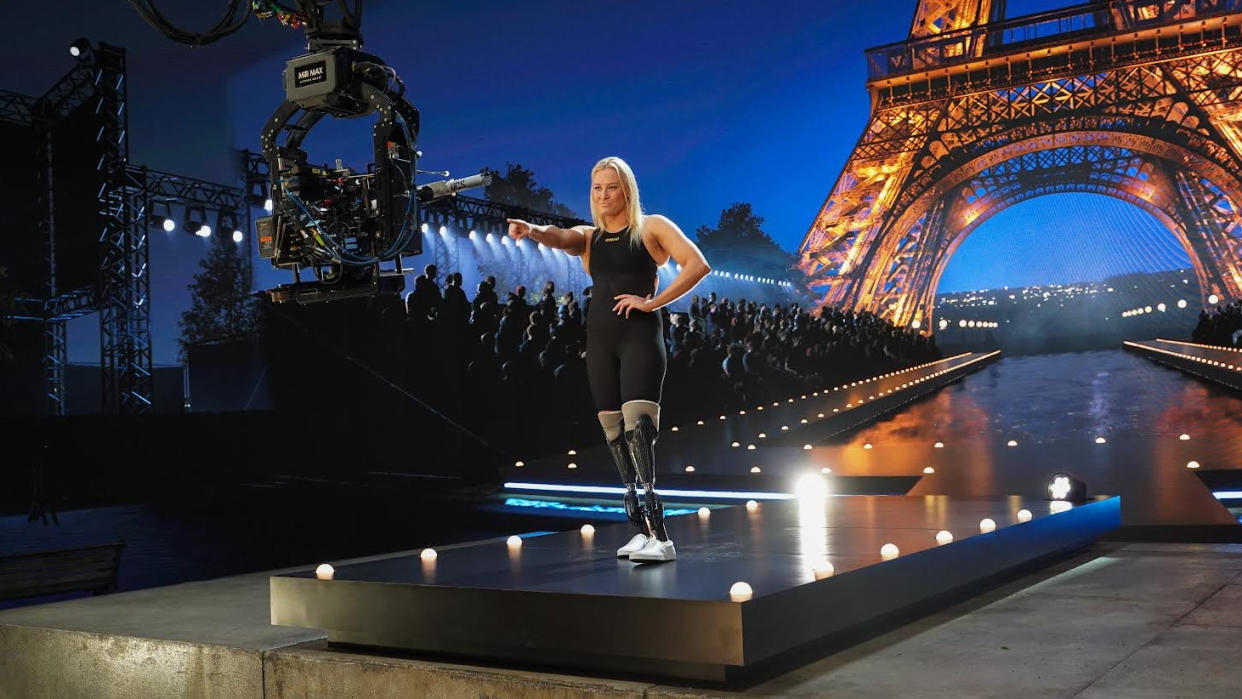
The biggest digital art trends for 2024 will usher in new tech and approaches to CG art and VFX creation, see a further rise in the use of generative AI and AI trends, as well as a revitalisation of 2D animation. How do I know? I asked the professionals, from ILM to Wētā FX and leading artists working today.
The digital art industries suffered multiple blows in 2023. Strikes in the film industry put VFX and concept artists out of work, and changes to social media algorithms have made it difficult for artists to get the level of online engagement they’re used to. On top of this, the threat presented by AI-generated art has grown even more.
AI-powered tools within the software packages that 3D artists use have continued to improve in 2023
To respond to this disruption, artists are looking at alternative ways to make money from their work. They’re also fighting in the courts against the unauthorised use of their work to train AI models, as we discovered when we interviewed illustrator Kelly McKernan.
On the plus side, AI-powered tools within the software packages that 3D artists use have continued to improve in 2023, saving countless hours of drudgery, as we found when we asked what indie game developers think of AI. And there’s been a great deal of excitement around the release of Procreate Dreams, which will make 2D animation more accessible.
Looking ahead to 2024, all of these factors will affect the CG art trends we can expect to see, as well as a continued rise in AI trends. (And if you like this article, read our feature on the gaming trends for 2024.) Here’s how leading artists working in CG, VFX, animation and illustration think 2024 will go.
01. Procreate Dreams will shake up animation
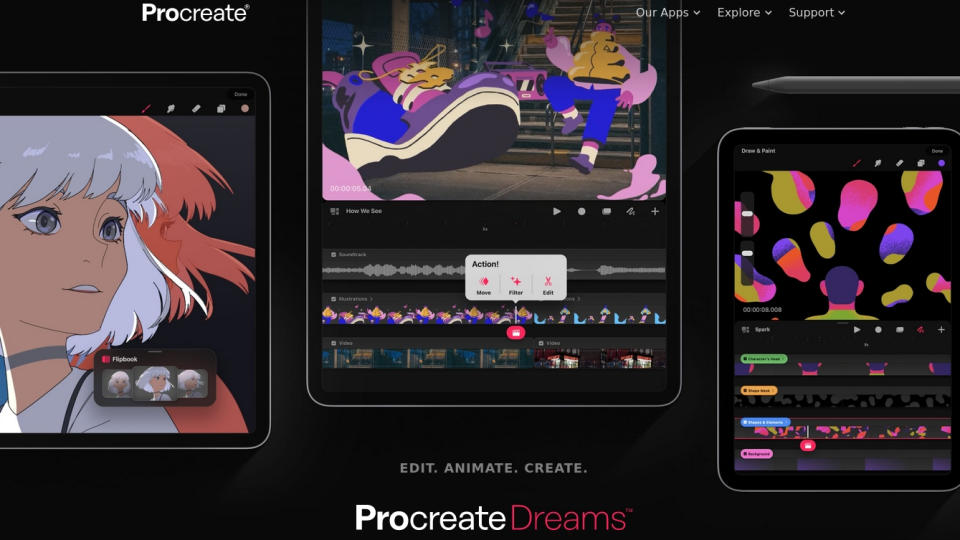
Procreate Dreams, an animation-focused app by the people who make Procreate, is a real game-changer for 2D animation because it lowers the barrier to entry to a point where anyone with an iPad and £19.99 can access a top-quality animation tool for a one-off fee. I predict Procreate Dreams will spur on one of 2024's biggest animation trends - a return to 2D shorts.
In his Procreate Dreams review our writer Rob Redman said, "it's unmatched and unrivalled". Michael Ollerton, a Senior Character Artist, 2D Animator, Character Designer and Concept Artist, is "very excited" for what this app can do.
I wonder how many incredible animators might find their calling just because they finally got a chance to do it
"Tools and support for 2D traditional animation have been very limited, so artists are desperate for any tools that can help in our process," he says. "The main recommended software packages to pursue this craft are just not affordable to many."
With Procreate Dreams, 2D animation is now something people can try out casually, with minimal initial outlay. Michael says: "I wonder how many incredible animators might find their calling just because they finally got a chance to do it. I’m hoping there will be an explosion of new animators and animation."
Michael even hopes, although he describes this as "very wishful thinking”, that the software could be “a major spark that brings back 2D feature animation in the West". He adds: "If we suddenly have hundreds of thousands of artists learning to animate that’s surely going to cause a shift!"
02. Artists will diversify their income sources
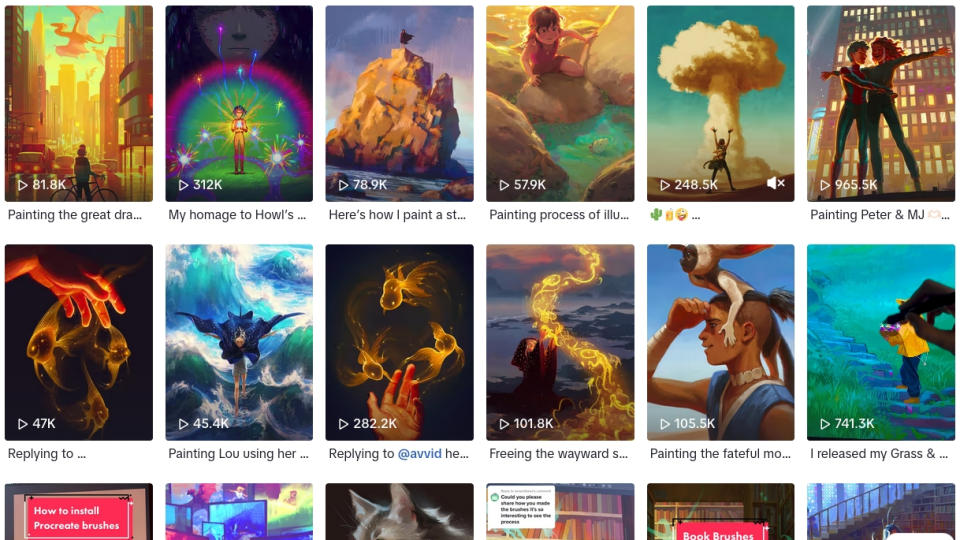
In the art world, the side hustle is fast becoming an essential fail-safe in an increasingly unstable set of industries. And a single hustle isn’t enough, which is why you'll see artists with a Patreon, an online shop, a strong presence on multiple social media platforms, as well as doing tutorials on YouTube and live streaming on Twitch.
Illustrator Devin Elle Kurtz explains that this is a trend "borne of necessity" due to "animation and game industry gigs growing shorter, and sudden cancellations and layoffs becoming more rampant". She adds: "It is not uncommon to hear that an artist has experienced not just one but sometimes two or more rounds of layoffs in a single year, and sadly, unless significant structural changes are made very quickly, I don't foresee this trend slowing."
Many convention regulars are looking to social media options like YouTube and TikTok for steadier income
Distressingly, this comes at a time when even artists with a big online following are seeing markedly less engagement, and building up an audience is harder than ever for those starting out. On top of this, Devin tells us that conventions are becoming more competitive. "Many convention regulars are looking to social media options like YouTube and TikTok for steadier income when they're rejected from events they've relied on in past years," she says.
In all this gloom, there's something that gives Devin hope. "One positive side effect of these difficult times is a growing consciousness among artists of the importance of unions and collective action for securing liveable wages and quality of life guarantees in creative fields. I foresee unionisation efforts increasing over the coming years, and with any luck, securing the structural changes we need to bring stability back to the creative field."
03. The 'no CGI' trend in films will continue
So many people are so heavily invested in this annoying trend that we see no reason why it won't persist well into next year, and beyond. If you're not well-versed in this particular drama, allow me to get you up to speed. You will have noticed that it's common for filmmakers to boast that there's "no CGI" in their film or TV show. These claims are often accompanied by on-set footage of an actor in ultra-realistic prosthetics, or a car being jumped through flames, and so on. And these videos are put forward as "proof" that it really was "all practical".
What most people don't realise is that these sequences are almost always digitally enhanced in some way, and frequently the main objects in the shot - the car, the monster, etc - are partially or completely reconstructed digitally, and that's what you see in the final film. Often the entire shot is computer generated, with the original footage used as a reference. The breakdowns detailing this process appear on industry websites, and most people never see them.
Often the entire shot is computer generated, with the original footage used as a reference
The main issue with this trend is that it refuses credit to the hundreds of highly talented artists who have worked long hours to make that production look amazing. It also reinforces the idea that VFX is somehow "less good" or involves less artistry than things that are captured in-camera.
We've all seen CG effects that we didn't appreciate, but that's true of any art form. Most people have very little awareness of how much of what we watch is digitally constructed, because most of the time those effects are invisible. So it's a backlash against something that nearly all of the time, we’re actually quite happy with. VFX director Hugo Guerra wrote a great opinion piece on the 'no CG' debacle, which you should read.
04. We'll see more AI, but in a good way
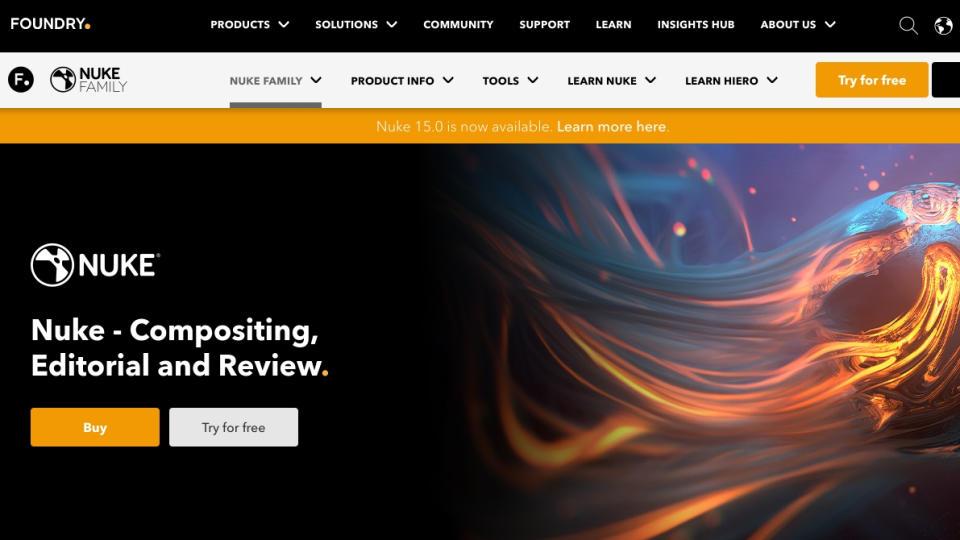
There's plenty of controversy around generative AI, but one area where these new tools are undeniably a force for good is in 3D art, animation, video games and the VFX industry. We're used to 3D workflows being cumbersome and clunky, with renders taking hours to materialise.
VFX work is known for being laborious, with artists spending their days making meticulous, frame-by-frame edits. Now, thanks to AI technology and the powerful hardware that runs it, things are changing fast. We're seeing real-time 3D rendering in the viewport, and other tools that automate boring tasks for VFX artists. It's transforming how this work is done.
2024 will continue to see the rise of tools infused with AI that will help to remove some of the drudgery of dealing with incredibly complex scenes
Kimball Thurston, Chief Technology Officer at Wētā FX, tells me that these technologies are "not to replace humans, but rather empower them to improve stories". He explains: "2024 will continue to see the rise of tools infused with AI that will help to remove some of the drudgery of dealing with incredibly complex scenes. The point is to have tools that allow people to keep the fun part of their job, that act of creation, while allowing them to ignore the more tedious."
Kimball continues: "There are already examples of this, such as a machine learning system on set giving real-time depth information, enabling the preview of CG elements interacting with the live action actors." These tools make it easier for directors and actors to work effectively with computer generated parts.
Kimball emphasises that AI tools exist to facilitate human creativity. "These secondary tools do not on their own transform a good story into a great one," he says. "To assist a human to create a great story, the tools that will be most useful to artists will not just help save time or money, but rather they will be tools that help artists draw out better performances."
05. We'll see more AI, but in a bad way
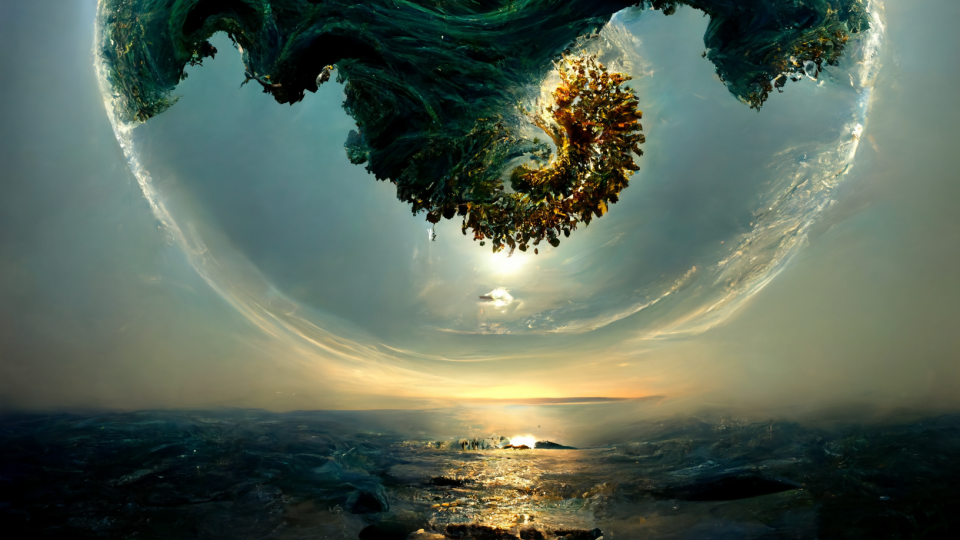
Despite furious pushback from artists and the fans of their work, AI image generators are continuing to develop the quality of their output, and their usage is growing. Big companies are using them to make advertising and marketing materials, and even Netflix has used them to create parts of an animated short film. Every kind of creative work is affected.
So, while 2024 will be the year we see AI art generators making even bigger inroads into the creative industries, it will also be the year we see the progression of multiple lawsuits against the providers of these technologies. Getty Images is cooking up legal cases in both the UK and the US, and artist Karla Ortiz is leading a class action lawsuit representing a large roster of digital artists. Read my feature about what can be done to stop AI for a deeper look at the issue.
The hope is that the industry will eventually be regulated by laws that require consent from rights holders before using images to train AI models, and ensure that artists are fairly compensated for their work. The fight is on.
06. There will be a backlash against AI art
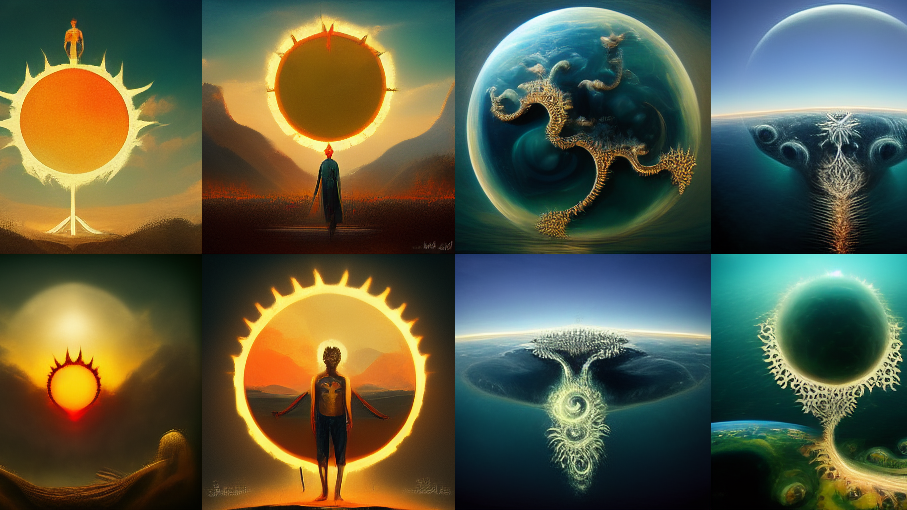
If film audiences don't like it when human-designed visual elements are created with the help of a computer, think how they're going to react to material that was produced completely by an AI.
Netflix Japan was devastatingly roasted when it used AI-generated backgrounds as part of its creative output. Audiences and artists turned on Disney when it was revealed the intro to Secret Invasion was made using AI.
At this point in AI's use, audiences are clearly not happy seeing cheap content made in Midjoury and the same fate as befell Netflix and Disney surely awaits any other entertainment company that tries something similar.
This is not to say AI will not be used by studios because it will, but expect to see Adobe's approach to AI tagging take off so everyone is aware how AI was used, and expect to see more of how AI will affect creativity.
07. NFTs won't see a second wind
On 20 September, a Rolling Stone article made a splash in the crypto world by declaring NFTs to be "totally worthless", citing a report that found 95% of them have no value. (Read our explainer, 'What are NFTs' for a catch-up.) Some crypto people are still hoping we're going to see a revival, but my money is on that not happening. Here's why: the fundamental proposition is flawed because NFTs are doing something very strange with the concept of ownership.
In an article for The Atlantic, technologist Anil Dash writes about how he and a partner came up with the idea for NFTs at a one-night hackathon in 2014, with the honourable intention of enabling artists to "make some money and have control over their work". The prototype they built that night had one problem: it wasn't possible to store an actual artwork on the blockchain because of size constraints. So, running out of time, they fudged it and used a link to the artwork instead.
The fundamental proposition is flawed because NFTs are doing something very strange with the concept of ownership
Anil explains in his article: "Seven years later, all of today's popular NFT platforms still use the same shortcut. This means that when someone buys an NFT, they're not buying the actual digital artwork; they're buying a link to it. And worse, they're buying a link that, in many cases, lives on the website of a new start-up that's likely to fail within a few years."
So when you buy an NFT, what you actually own something adjacent to the thing you are supposed to have bought. You don't get to access or control the artwork any more than anyone else - you haven't bought the copyright - so in what sense do you "own" it?
In the above deeply weird video, two famous people congratulate each other over their "purchases" of some unremarkable cartoon apes. The audience applauds. They’re pretending to have that feeling of satisfaction that comes with a high-value purchase, but that is something no one is ever going to get from an NFT. Because deep down, you know you haven't really bought the artwork. And that's why they're not coming back.
08. Virtual production will be bigger

Traditionally, VFX work takes place in a studio after footage for a production has been shot. Virtual production flips this on its head by using tools like Unreal Engine 5 to combine CG elements with live performances in real-time on the set, capturing both together in-camera. We recently visited a virtual LED Volume set, and couldn't help but be impressed.
Sometimes this involves using Unreal Engine to display backgrounds on enormous LED screens behind the performers. This means that actors can see the elements they're meant to be interacting with, and they're fully immersed in the world where the action is taking place - which is very much not the case when green screens are used. Another major benefit is that the actors are lit by the LED display - light reflected by a snowy landscape will fall on them just as it would in the real world.
As people learn the skills needed for this way of working, and the tools and infrastructure around it develop, the use of virtual production is growing. Industrial Light & Magic's virtual production technology is called StageCraft, and the company has been using it on a diverse range of projects. Chris Bannister, Executive Producer of Virtual Production at ILM, tells me: "Our work in 2023 has ranged from commercials, features, episodic, special venue projects and beyond, including some exciting work for the upcoming Paris Summer Olympics."
Chris continues: "The most exciting thing looking into the future of virtual production and VFX is the continued exploration of our broad suite of tools to create more iconic images and stories."

